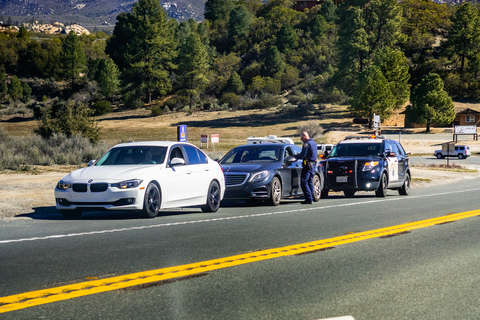New California driving laws take effect Jan. 1

California motorists should be aware of some of the new laws going into effect January 1, 2012.
These new traffic laws were passed by the Legislature and signed by the Governor earlier this year, and the California Highway Patrol is asking the motoring public to familiarize themselves with the changes before they take effect.
“Our hope is by educating the public of these new traffic safety laws in advance, more lives will be saved in the new year,” said CHP Commissioner Joe Farrow.
The following are highlights of a few of the significant changes for the upcoming year:
-
A change to California’s Child Passenger Safety Seat law will now require children to ride in either a car seat or booster seat until the age of eight, or until they reach a height of 4 feet 9 inches. This law also requires children who do not meet the age or height requirement to ride in the rear seat of a vehicle unless the vehicle has no back seats, the restraint system cannot be properly installed or the rear seats are already occupied by children under age eight. The law still maintains that a child may not ride in the front seat of a vehicle with an active passenger airbag if they are under one year of age, less than 20 pounds, or riding in a rear-facing child safety seat. (SB 929, Evans)
-
Drivers are required to stop and submit to a sobriety checkpoint. Peace officers are prohibited from impounding a vehicle for 30 days out of a sobriety checkpoint if the only offense by the driver is failing to hold a valid driver license. The new law requires that the officer make a reasonable attempt to identify the registered owner in order to release the vehicle. (AB 353, Cedillo)
-
Vehicles will be prohibited from crossing double parallel solid white lines except where permitted. (AB 1105, Gordon)
-
Anyone who is convicted of reckless driving under Section 23103.5 of the Vehicle Code can apply for a restricted driver license prior to the completion of their one-year suspension, provided they meet specified conditions, including the installation of an Ignition Interlock Device in their vehicle. (AB 520, Ammiano)
- Electric Vehicles (EV) must now be plugged in for refueling when occupying an EV-designated parking space, otherwise they may be towed. In addition, the law prohibits a person from obstructing, blocking, or otherwise barring access to an EV-designated parking space. (AB 475, Butler)
-
The County of Riverside, or any city within the county, has been permitted to develop a Neighborhood Electric Vehicle transportation plan. (AB 61, Jeffries & SB 290, Correa)
-
Inyo County, using a pilot program, has been granted authority to explore options for developing a greater network of linked Off-Highway Vehicle trails; they will be allowed to designate combined use highways on unincorporated county roads for up to 10 miles, subject to CHP approval. This program will remain in effect until January 1, 2017. (AB 628, Conway)
-
The City of Santa Monica can now operate 25 city-owned buses with illuminated signs displaying advertising messages.
-
Local governments can now regulate advertising signs on any motor vehicle parked or left standing upon a public street, except for signs painted directly upon or permanently affixed to the vehicle for permanent decoration, identification, or display that do not extend beyond the overall length, width, or height of the vehicle. (AB 1298, Blumenfield)
-
Licensed livestock carriers can continue to travel on Highway 101 within the counties of Del Norte, Humboldt, and Mendocino from its junction with Highway 1 near Leggett, north to the Oregon border until January 1, 2015. (AB 349, Chesbro)
-
A law dealing with repeat driving under the influence (DUI) offenders that was passed in 2010 also goes into effect on January 1:
-
Section 23579 was added to the Vehicle Code, which authorizes courts to revoke a driver’s license for 10 years if a person is convicted of three or more DUIs. Under this law enacted in 2010, a motorist may be allowed to apply for reinstatement of his or her driver’s license with the Department of Motor Vehicles (DMV) after five years, if the person installs an Ignition Interlock Device (IID) in their vehicle. The law allows the DMV to terminate this restricted license if the IID requirements are not met.(AB 1601, Hill).
The points above are only a synopsis of the new laws listed here and only a partial list of California’s new laws adopted for 2012. For complete information on chaptered bills enacted in 2011, please refer to the Legislative Counsel website at www.LegInfo.ca.gov.